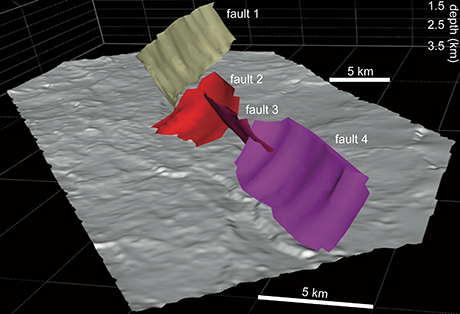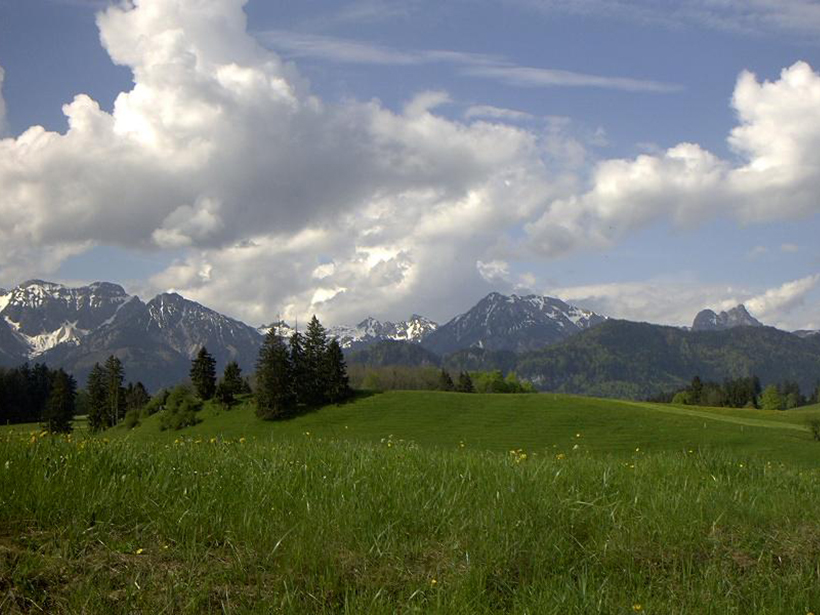Source: Tectonics
As Europe flexed down under the weight of the Alps, a foreland basin—the German Alpine Molasse, which today extends from Switzerland in the west to the Czech Republic in the east—formed. Within this basin, geologists have found large faults that displace sediments. Although they are parallel to faults within the underlying carbonate platform, the two groups of faults are not physically connected, raising the question of how such faults could independently develop.
Luckily, the basin has been under intense scrutiny for decades: First, oil and gas companies scoured the region for any available resources; more recently, speculation that a newly discovered, deep aquifer could be used as a geothermal reservoir fueled further exploration. However, to characterize the potential reservoir, researchers needed to better understand the fault kinematics.
Here von Hartmann et al. performed a new structural analysis of a small section of the Molasse Basin—just 120 square kilometers—using data collected in 1987. The team imaged four prominent master faults that were parallel to the structures within the underlying carbonate platform. They found that the Molasse sediments were hundreds of meters above those in the carbonate platform—definitively showing that the two fault types are not connected, as previous research suggested.

Instead, the new analysis proposes that the faults grew both upward and downward from the middle of the Molasse sediments—showing for the first time how such faults could have formed independently.
The team built a model of the Molasse, which proposes that as the foreland basin formed 30 million years ago, only a distinct portion of the Molasse came under extensional stress, allowing normal faults to form above while the carbonate platform below was under compression. (Tectonics, doi:10.1002/2016TC004176, 2016)
—Shannon Hall, Freelance Writer
Citation:
Hall, S. (2016), Characterizing the faults beneath Germany, Eos, 97, https://doi.org/10.1029/2016EO057447. Published on 16 August 2016.
Text © 2016. The authors. CC BY-NC-ND 3.0
Except where otherwise noted, images are subject to copyright. Any reuse without express permission from the copyright owner is prohibited.

